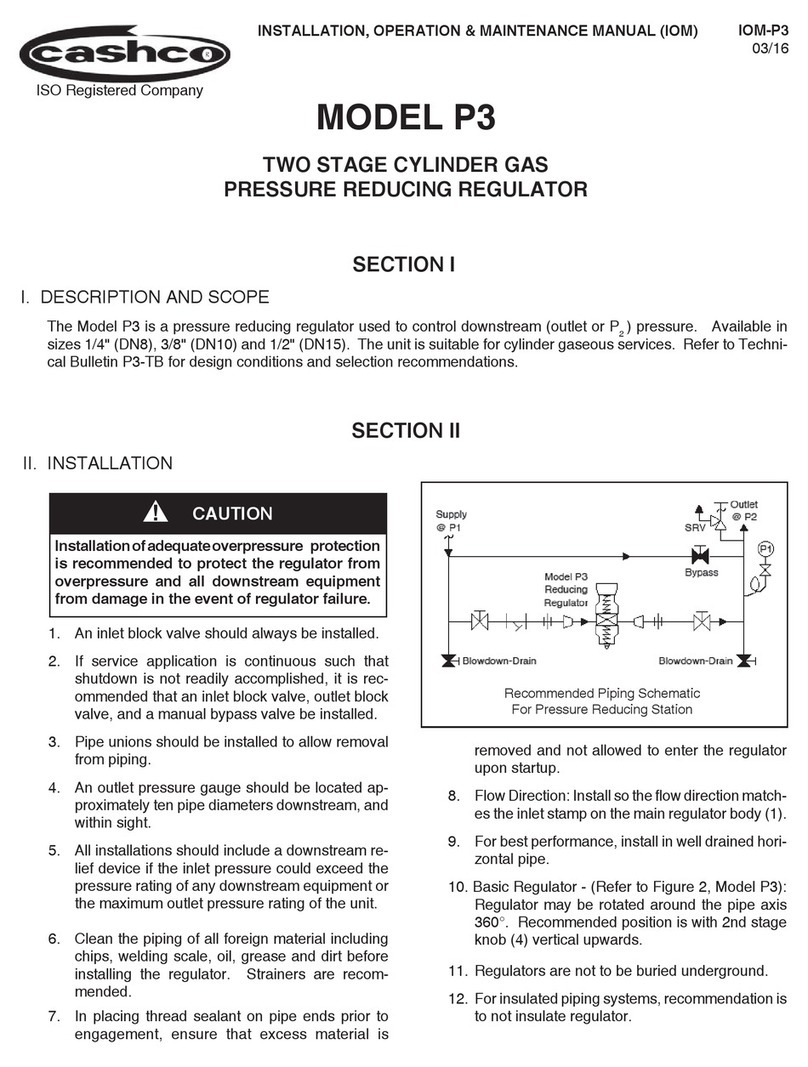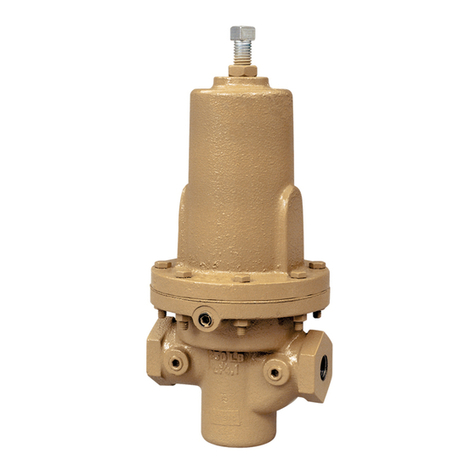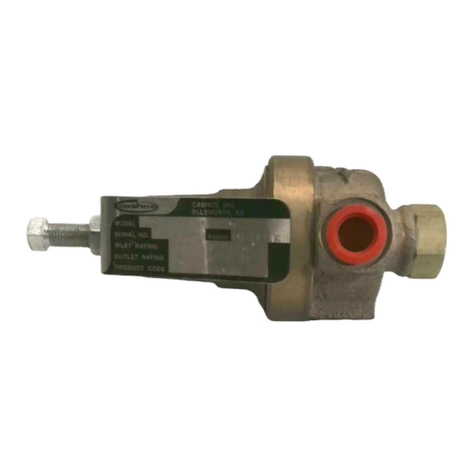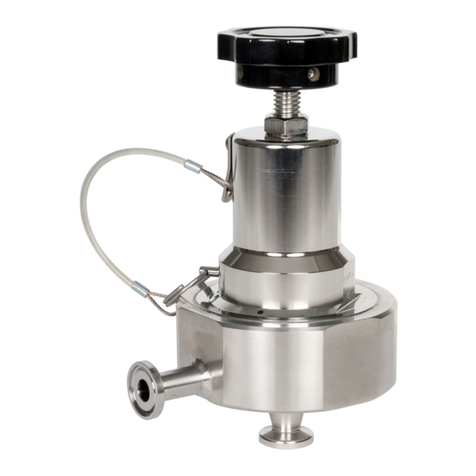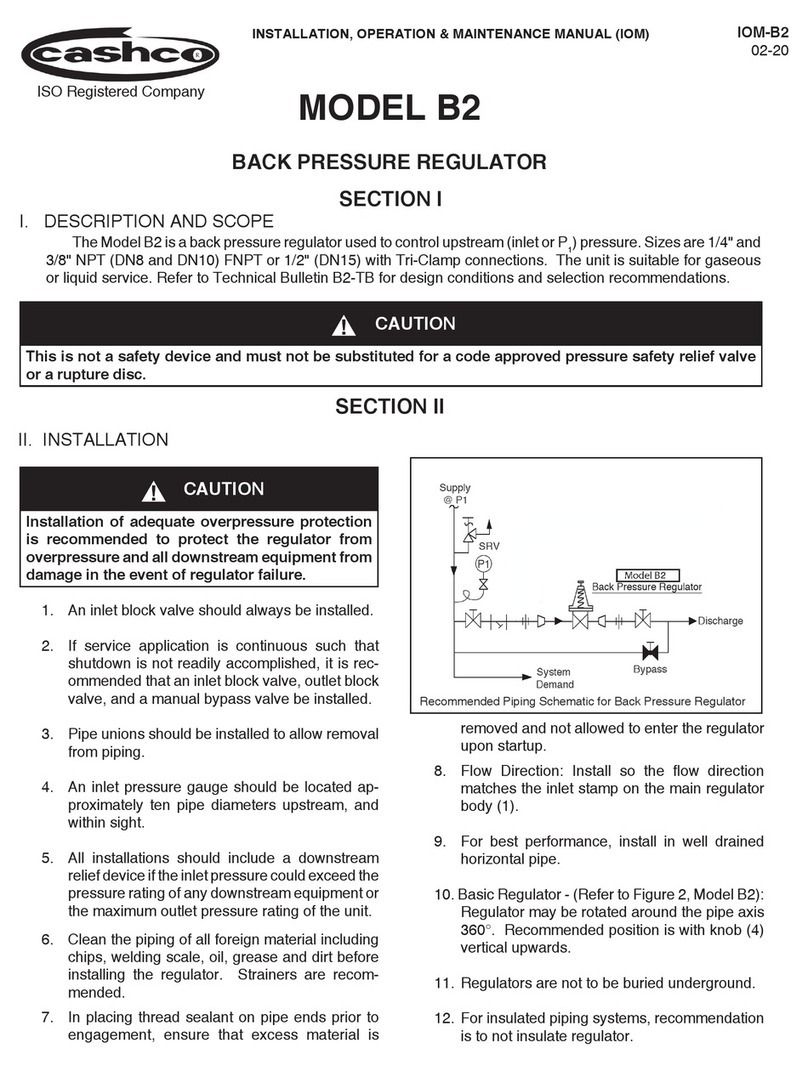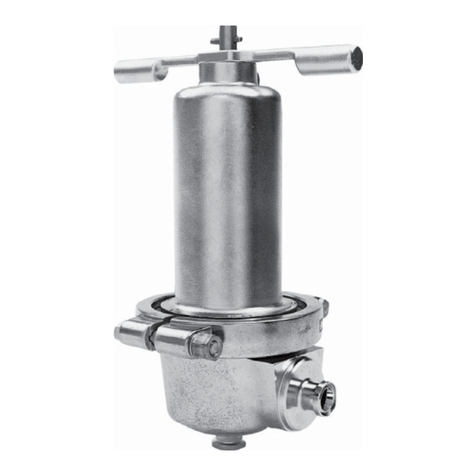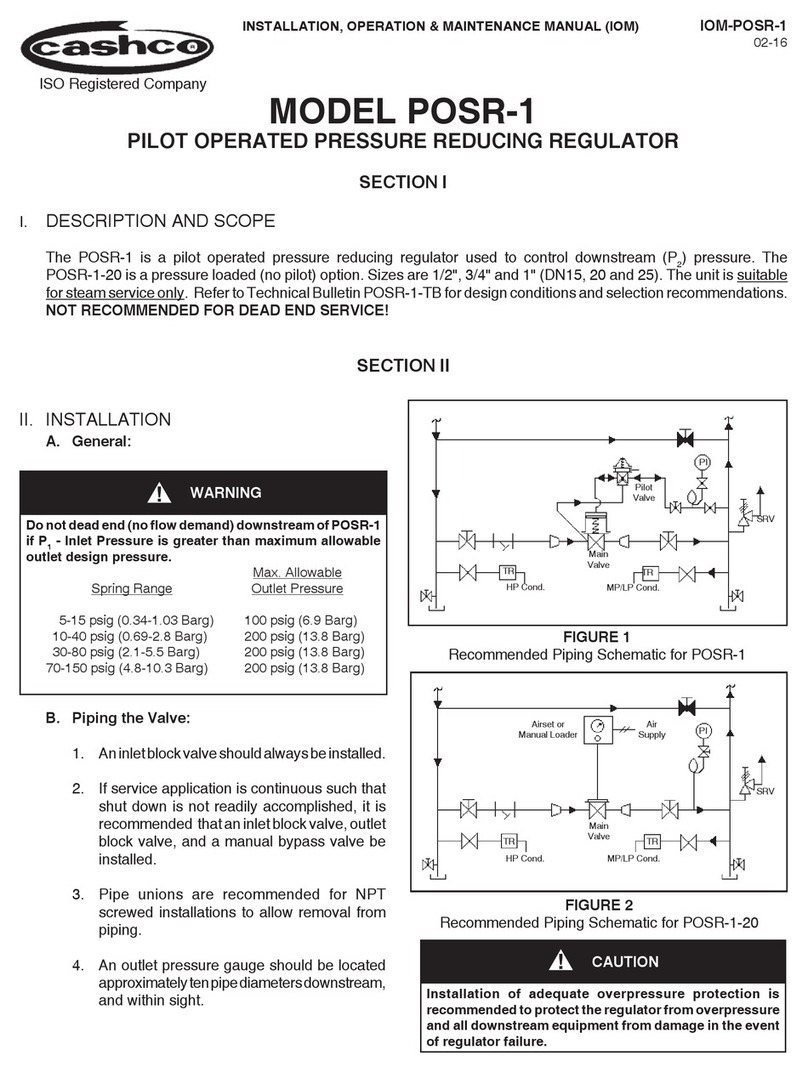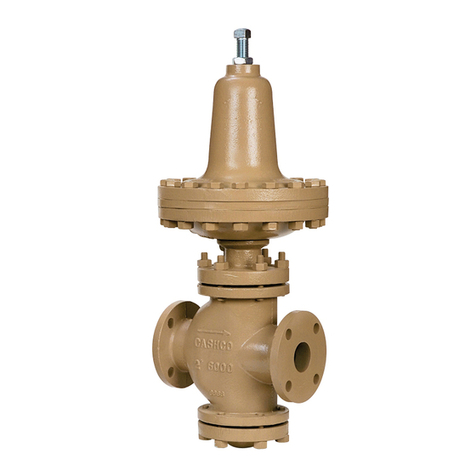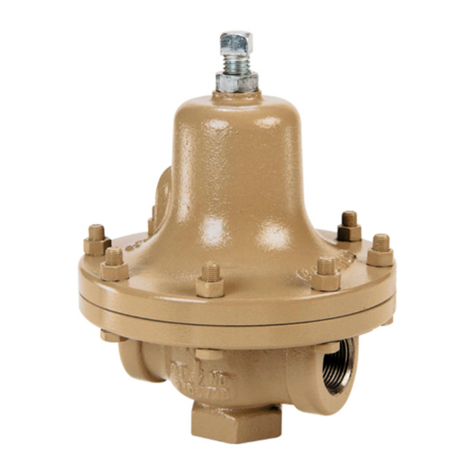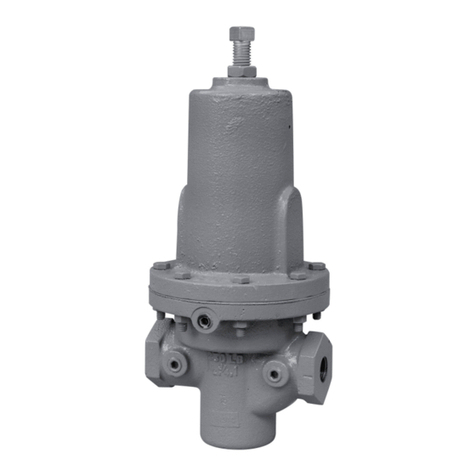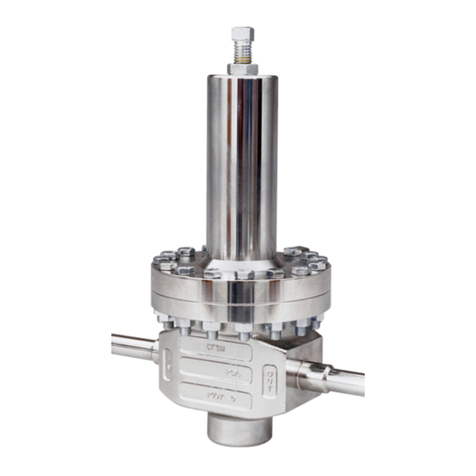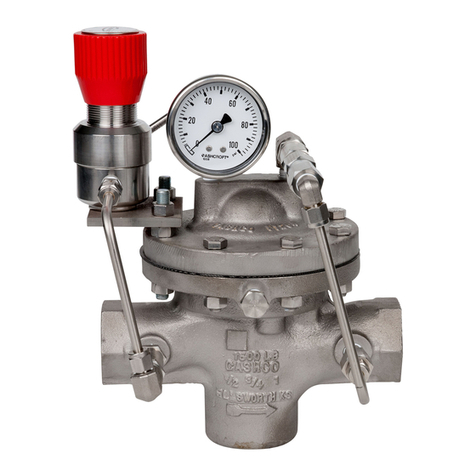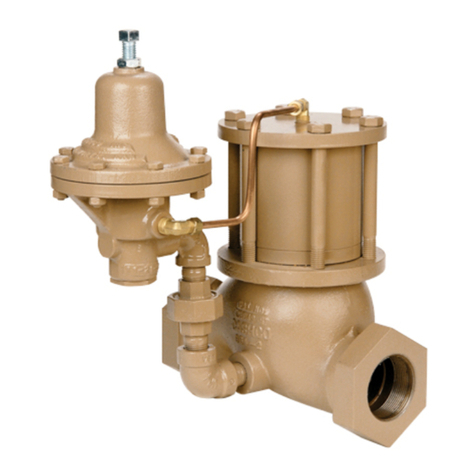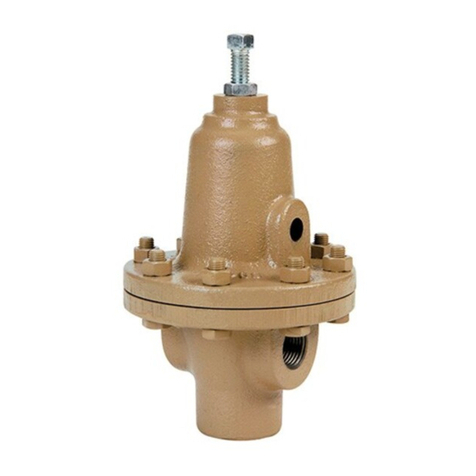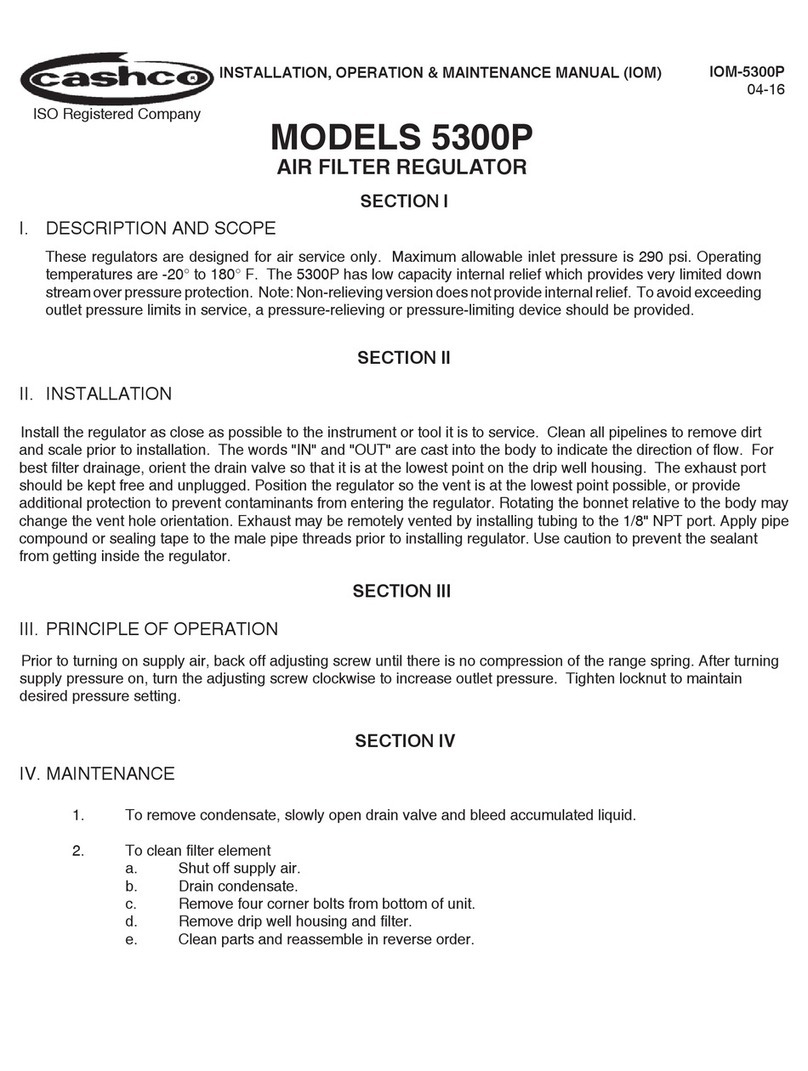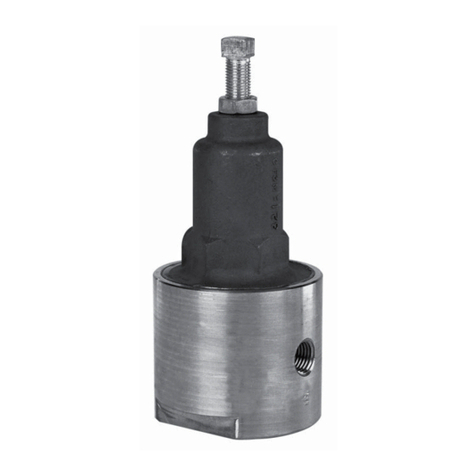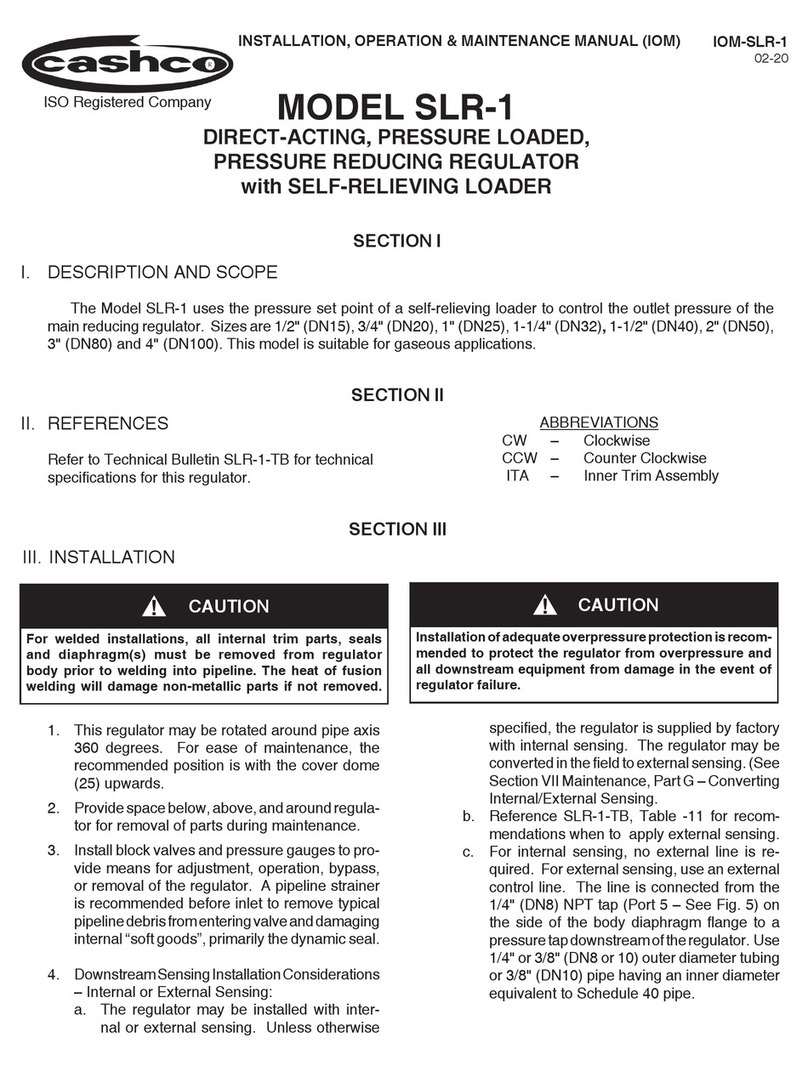
IOM-PGR-2 7
8. Reassemble diaphragm subassembly by
placing pusher plate seal (60.13) over
threaded post of pusher plate (60.4), placing
diaphragm (60.12) and pressure plate (60.3)
over the threaded post. Assure the pressure
plate (60.3) is placed with curved outer rim
down next to the diaphragm (60.12) surface.
Place a thread sealant compound on the
threads of the pusher plate post (60.4). Apply
15 in-lbs torque to tighten the nut (60.10).
9. Place spring (60.15) over the pusher plate
nut (60.10) of the diaphragm subassembly.
10. Place multipurpose, high temperature grease
into depression of spring button (60.5) where
adjusting screw (60.8) makes contact.
Set spring button (60.5) onto range spring
(60.15); ensure spring button is laying flat on
top of spring.
11. Rotate the spring chamber (60.2) CW by hand
into the threaded portion of the body (60.1)
ensuring not to cross thread. Continue rotat-
ing CW until firmly seated against the upper
diaphragm. Tighten to 30-35 ft-lbs (41-47
N-m) torque value.
12. Reinstall adjusting screw (60.8) with nut
(60.11) into the spring chamber (60.2).
13. Pressurize with air and spray liquid leak de-
tector to test around body and spring chamber
for leakage. Ensure that an outlet pressure
is maintained during this leak test of at least
mid-range spring level; i.e. 20-80 psig (1.4-
5.5 Barg) range spring, 50 psig (3.4 Barg) test
pressure minimum.
TRIM REPLACEMENT -
1. Secure stabilizer body (60.1) in a vise with the
body cap (60.6) oriented up and the spring
chamber (60.2) downwards.
NOTE: Piston (60.14) assembly is a com-
position seat, Cashco, Inc. does not recom-
mend attempting to remove the composi-
tion seat. If composition seat is damaged,
replace entire piston assembly.
4. Clean flat mating surfaces of body (60.1) to
body cap (60.6) shoulder. Be careful not to
scratch either surface.
5. Clean debris from within the body (60.1) cav-
ity. Parts to be reused should be cleaned
according to owner's procedures.
6. Slide the post end of the piston (60.14),
slowly into the body cavity.
7. Place piston spring (60.7) over spring hub of
the piston (60.14).
8. Apply pipe thread sealant to the body cap
(60.6) threads. Thread body cap into body.
When body cap is fully down against body
at the body cap shoulder, impact the body
cap into the body tight. NOTE: When unit is
put into service and pressurized, these two
parts seal metal-to-metal with no gasket.
9. Bench test unit for suitable operation.
NOTE: Regulators are not tight shutoff de-
vices. Even if pressure builds up beyond set
point, a regulator may or may not develop
bubble tight shutoff. In general, tighter shut-
off can be expected with composition seat.
10. Pressurize with air and spray liquid leak
detector to test around body cap (60.6)
and body (60.1) for leakage. Test pressure
should be a minimum of 100 psig (6.9 Barg)
at the inlet.
11. Remove body from vise, rotate down side up
and secure body in vise with body cap down.
12. Reassemble diaphragm subassembly by
placing pusher plate seal (60.13) over
threaded post of pusher plate (60.4), plac-
ing diaphragm (60.12) and pressure plate
(60.3) over the threaded post. Assure the
pressure plate (60.3) is placed with curved
outer rim down next to the diaphragm (60.12)
surface. Place a thread sealant compound
on the threads of pusher plate post (60.4).
Apply 15 in-lbs. torque to tighten the nut.
13. Place spring (60.15) over the pusher plate
nut (60.10) of the diaphragm subassembly.
14. Place multipurpose, high temperature
grease into depression of spring button
(60.5) where adjusting screw (60.8) makes
CAUTION
To prevent damage to the body, use soft jaws when
securing body in a vise. Position body so that vise closes
over the inlet and the outlet connections.
2. Loosen and remove body cap.
3. Remove piston spring (60.17), and piston
(60.14). Note that the seat and piston guide
are integral parts of the body (60.1) casting.
Inspect integral seat and guide for excessive
wear, especially at seat surfaces. Replace if
worn, nicked or depressed. If integral seat is
nicked, use seat lapping compound to remove.
